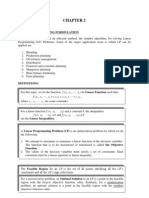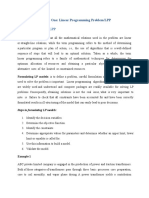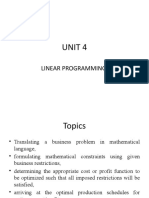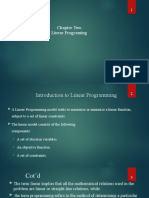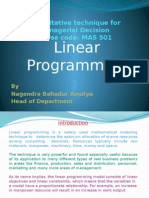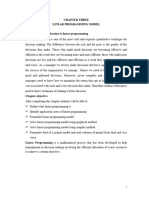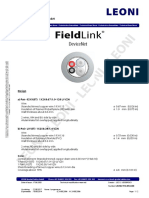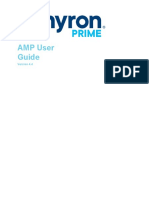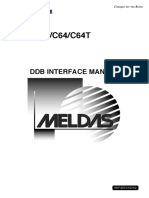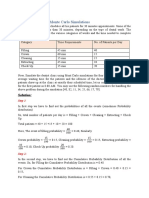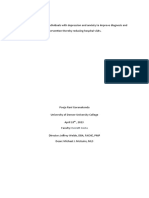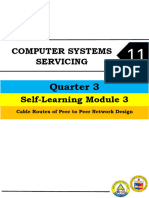0% found this document useful (0 votes)
22 views34 pagesChapter 2 - LP - Graphical Method
Chapter 2 discusses Linear Programming (LP), focusing on problem formulation, graphical solutions, and special cases such as infeasible and unbounded solutions. It provides examples, including ABC company and Wyndor Glass Co., illustrating how to maximize profits under constraints. The chapter also covers methods like isoprofit-line and corner-point methods for solving LP problems graphically.
Uploaded by
tranganhmc20Copyright
© © All Rights Reserved
We take content rights seriously. If you suspect this is your content, claim it here.
Available Formats
Download as PPTX, PDF, TXT or read online on Scribd
0% found this document useful (0 votes)
22 views34 pagesChapter 2 - LP - Graphical Method
Chapter 2 discusses Linear Programming (LP), focusing on problem formulation, graphical solutions, and special cases such as infeasible and unbounded solutions. It provides examples, including ABC company and Wyndor Glass Co., illustrating how to maximize profits under constraints. The chapter also covers methods like isoprofit-line and corner-point methods for solving LP problems graphically.
Uploaded by
tranganhmc20Copyright
© © All Rights Reserved
We take content rights seriously. If you suspect this is your content, claim it here.
Available Formats
Download as PPTX, PDF, TXT or read online on Scribd
/ 34




